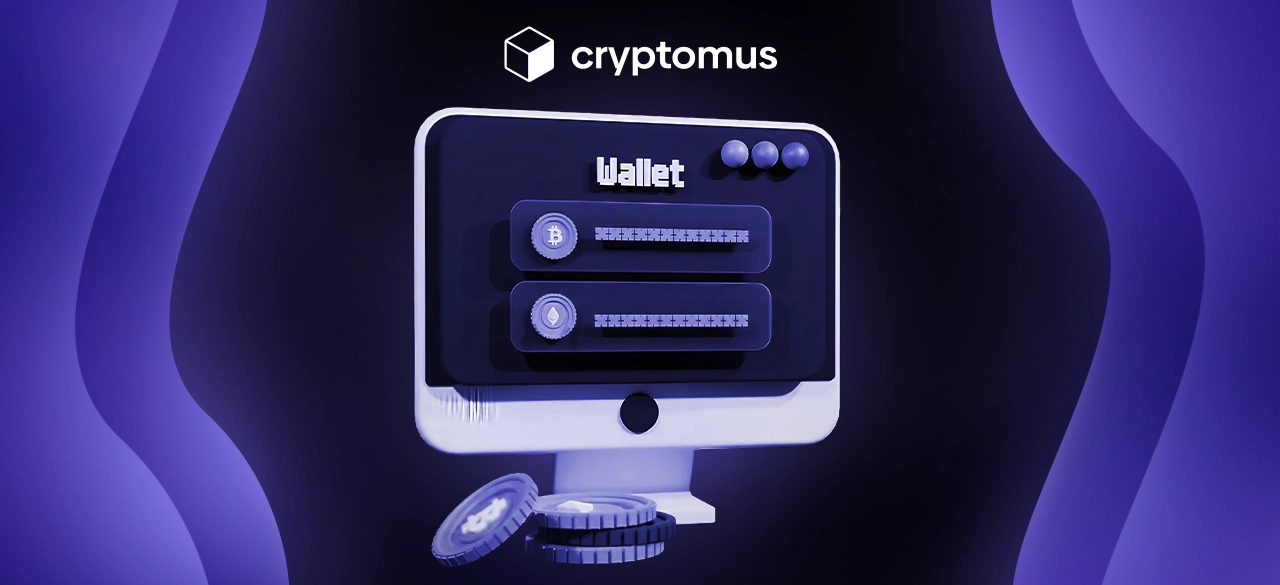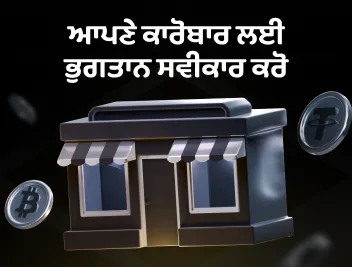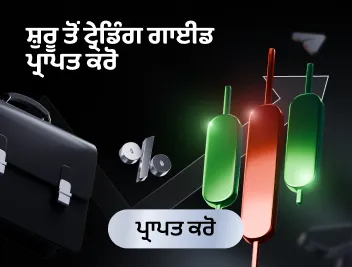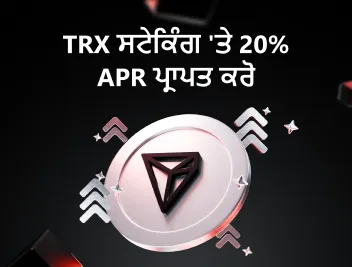
ਇੱਕ ਕ੍ਰਿਪਟੋ ਵਾਲਿਟ ਕਿਵੇਂ ਬਣਾਇਆ ਜਾਵੇ
ਇੱਕ ਕ੍ਰਿਪਟੂ ਵਾਲਿਟ ਤੁਹਾਡੀ ਕ੍ਰਿਪਟੂ ਸੰਪਤੀਆਂ ਦੀ ਸਿੱਧੀ ਨਿਗਰਾਨੀ ਅਤੇ ਪ੍ਰਬੰਧਨ ਲਈ ਸਭ ਤੋਂ ਜ਼ਰੂਰੀ ਸਾਧਨਾਂ ਵਿੱਚੋਂ ਇੱਕ ਹੈ. ਇਸ ਲੇਖ ਵਿਚ, ਅਸੀਂ ਸਹੀ ਵਾਲਿਟ ਦੀ ਚੋਣ ਕਰਨ ਦੀਆਂ ਸਾਰੀਆਂ ਵਿਸ਼ੇਸ਼ਤਾਵਾਂ ਬਾਰੇ ਵਿਚਾਰ ਕਰਾਂਗੇ ਅਤੇ ਵੱਖ-ਵੱਖ ਉਦੇਸ਼ਾਂ ਲਈ ਇਕ ਕ੍ਰਿਪਟੂ ਵਾਲਿਟ ਕਿਵੇਂ ਸਥਾਪਤ ਕਰਨਾ ਹੈ ਇਸ ਬਾਰੇ ਇਕ ਕਦਮ-ਦਰ-ਕਦਮ ਗਾਈਡ ਦੇਵਾਂਗੇ.
ਸਹੀ ਕ੍ਰਿਪਟੋ ਵਾਲਿਟ ਦੀ ਚੋਣ ਕਰਨਾ
ਮੈਂ ਇੱਕ ਕ੍ਰਿਪਟੋ ਵਾਲਿਟ ਕਿਵੇਂ ਸਥਾਪਤ ਕਰਾਂ? - ਕਾਫ਼ੀ ਅਕਸਰ ਸਵਾਲ. ਇੱਥੇ ਕਈ ਕਿਸਮਾਂ ਦੇ ਕ੍ਰਿਪਟੂ ਵਾਲਿਟ ਹਨ, ਜਿਸ ਵਿੱਚ ਸਾੱਫਟਵੇਅਰ ਅਤੇ ਹਾਰਡਵੇਅਰ ਵਾਲਿਟ, ਮੋਬਾਈਲ ਅਤੇ ਡੈਸਕਟੌਪ ਵਾਲਿਟ ਅਤੇ ਹੋਰ ਬਹੁਤ ਕੁਝ ਸ਼ਾਮਲ ਹਨ. ਤੁਹਾਨੂੰ ਆਪਣੇ ਲੋੜ ਮੁਤਾਬਕ ਸਹੀ ਵਾਲਿਟ ਦੀ ਚੋਣ ਕਰ ਸਕਦੇ ਹੋ? ਆਓ ਦੇਖੀਏ!
ਹੇਠ ਕਾਰਕ ਤੁਹਾਨੂੰ ਬਿਹਤਰ ਇੱਕ ਖਾਸ ਕ੍ਰਿਪਟੂ ਵਾਲਿਟ ਲਾਉਣ ਵਿੱਚ ਮਦਦ.
ਸੁਰੱਖਿਆ: ਸੁਰੱਖਿਆ ਕਿਸੇ ਵੀ ਕ੍ਰਿਪਟੂ ਵਾਲਿਟ ਦਾ ਮੁੱਖ ਫਾਇਦਾ ਹੋਣਾ ਚਾਹੀਦਾ ਹੈ, ਇਸ ਲਈ ਉਹ ਵਾਲਿਟ ਵੱਲ ਧਿਆਨ ਦਿਓ ਜੋ ਮਜ਼ਬੂਤ ਸੁਰੱਖਿਆ ਵਿਸ਼ੇਸ਼ਤਾਵਾਂ (ਦੋ-ਕਾਰਕ ਜਾਂ ਬਾਇਓਮੈਟ੍ਰਿਕ ਪ੍ਰਮਾਣਿਕਤਾ, ਆਦਿ) ਦੀ ਪੇਸ਼ਕਸ਼ ਕਰਦੇ ਹਨ.
ਅਨੁਕੂਲਤਾ: ਤੁਸੀਂ ਆਪਣੀ ਕ੍ਰਿਪਟੂ ਬੱਚਤ ਨੂੰ ਸਟੋਰ ਕਰਨ ਲਈ ਇੱਕ ਵਾਲਿਟ ਬਣਾਉਂਦੇ ਹੋ, ਪਰ ਇਸਦਾ ਮਤਲਬ ਇਹ ਨਹੀਂ ਹੈ ਕਿ ਉਨ੍ਹਾਂ ਸਾਰਿਆਂ ਨੂੰ ਇੱਕ ਕ੍ਰਿਪਟੋਕੁਰੰਸੀ ਵਿੱਚ ਹੋਣਾ ਚਾਹੀਦਾ ਹੈ. ਇਹ ਸੁਨਿਸ਼ਚਿਤ ਕਰੋ ਕਿ ਤੁਹਾਡਾ ਕ੍ਰਿਪਟੋ ਵਾਲਿਟ ਉਨ੍ਹਾਂ ਕ੍ਰਿਪਟੂ ਕਰੰਸੀ ਦੇ ਅਨੁਕੂਲ ਹੈ ਜਿਨ੍ਹਾਂ ਦੀ ਤੁਸੀਂ ਵਰਤੋਂ ਕਰਨ ਜਾਂ ਨਿਵੇਸ਼ ਕਰਨ ਦੀ ਯੋਜਨਾ ਬਣਾ ਰਹੇ ਹੋ.
ਵੱਕਾਰ ਅਤੇ ਸਮੀਖਿਆਵਾਂ: ਕ੍ਰਿਪਟੋਕੁਰੰਸੀ ਵਾਲਿਟ ਕਿਵੇਂ ਸਥਾਪਤ ਕਰਨਾ ਹੈ ਇਹ ਸਿੱਖਣ ਤੋਂ ਪਹਿਲਾਂ, ਇਸ ਪ੍ਰਦਾਤਾ ਦੇ ਮੌਜੂਦਾ ਉਪਭੋਗਤਾਵਾਂ ਤੋਂ ਵੱਡੀ ਗਿਣਤੀ ਵਿੱਚ ਸਮੀਖਿਆਵਾਂ ਦੀ ਜਾਂਚ ਕਰਨਾ ਜ਼ਰੂਰੀ ਹੈ. ਵਾਲਿਟ ਪ੍ਰਦਾਤਾ ਦੀ ਸਾਖ ਦਾ ਵਿਸ਼ਲੇਸ਼ਣ ਕਰਨਾ ਇਹ ਯਕੀਨੀ ਬਣਾਉਣ ਲਈ ਮਹੱਤਵਪੂਰਣ ਹੈ ਕਿ ਵਾਲਿਟ ਭਰੋਸੇਮੰਦ ਅਤੇ ਭਰੋਸੇਮੰਦ ਹੈ.
ਫੀਸ: ਬਹੁਤ ਸਾਰੇ ਵਾਲਿਟ ਵਿੱਚ ਵਰਤੋਂ ਜਾਂ ਟ੍ਰਾਂਜੈਕਸ਼ਨ ਫੀਸ ਸ਼ਾਮਲ ਹੋ ਸਕਦੀ ਹੈ, ਇਸ ਲਈ ਇਸ ਮੁੱਦੇ ' ਤੇ ਪਹਿਲਾਂ ਤੋਂ ਵਿਚਾਰ ਕਰਨਾ ਬਿਹਤਰ ਹੈ. ਕਿਸਮ ਦੇ ਅਧਾਰ ਤੇ, ਇੱਕ ਵਾਲਿਟ ਦਾ ਭੁਗਤਾਨ ਕੀਤਾ ਜਾ ਸਕਦਾ ਹੈ ( ਹਾਰਡਵੇਅਰ ਵਾਲਿਟ) ਜਾਂ ਮੁਫਤ (ਸਾਫਟਵੇਅਰ ਵਾਲਿਟ). ਕੁਝ ਕ੍ਰਿਪਟੂ ਵਾਲਿਟ ਵਿਸ਼ੇਸ਼ ਵਿਸ਼ੇਸ਼ਤਾਵਾਂ ਅਤੇ ਲੈਣ-ਦੇਣ ਲਈ ਵਾਧੂ ਫੀਸ ਲੈ ਸਕਦੇ ਹਨ.
ਸਾਫ ਇੰਟਰਫੇਸ: ਇੱਕ ਵਾਲਿਟ ਵਿੱਚ ਇੱਕ ਸਪਸ਼ਟ ਅਤੇ ਉਪਭੋਗਤਾ-ਅਨੁਕੂਲ ਇੰਟਰਫੇਸ ਹੋਣਾ ਚਾਹੀਦਾ ਹੈ ਤਾਂ ਜੋ ਤੁਸੀਂ ਵੱਖ ਵੱਖ ਪਲੇਟਫਾਰਮਾਂ ਅਤੇ ਵਾਲਿਟ ਦੀਆਂ ਕਿਸਮਾਂ ਦੀ ਤੁਲਨਾ ਕਰ ਸਕੋ ਅਤੇ ਉਹ ਚੁਣੋ ਜਿਸ ਨੂੰ ਤੁਸੀਂ ਸਭ ਤੋਂ ਵੱਧ ਪਸੰਦ ਕਰਦੇ ਹੋ.
ਗਾਹਕ ਸਹਾਇਤਾ: ਇੱਕ ਪ੍ਰਦਾਤਾ ਜੋ ਇਸਦੇ ਭਾਗੀਦਾਰਾਂ ਨੂੰ ਲੋੜੀਂਦੀ ਜਾਣਕਾਰੀ ਅਤੇ ਸਰੋਤਾਂ (ਵਿਸ਼ੇਸ਼ ਬਲੌਗ, ਲੇਖ, ਗਾਈਡਾਂ ਅਤੇ ਅਕਸਰ ਪੁੱਛੇ ਜਾਂਦੇ ਸਵਾਲ) ਦੀ ਸਪਲਾਈ ਕਰਦਾ ਹੈ ਉਹਨਾਂ ਉਪਭੋਗਤਾਵਾਂ ਲਈ ਸੰਪੂਰਨ ਹੈ ਜੋ ਪ੍ਰਦਾਤਾ ਵਿੱਚ ਬਿਹਤਰ ਏਕੀਕ੍ਰਿਤ ਹੋਣਾ ਚਾਹੁੰਦੇ ਹਨ ਅਤੇ ਉੱਥੇ ਇੱਕ ਵਾਲਿਟ ਬਣਾਉਣਾ ਚਾਹੁੰਦੇ ਹਨ. ਉਹ ਤੁਹਾਨੂੰ ਅਜਿਹੇ ਮੁੱਦਿਆਂ ਨਾਲ ਵੀ ਮਦਦ ਕਰ ਸਕਦੇ ਹਨ ਜਿਵੇਂ ਕਿ " ਮੇਰਾ ਕ੍ਰਿਪਟੋ ਵਾਲਿਟ ਕਿਵੇਂ ਸਥਾਪਤ ਕਰਨਾ ਹੈ.”
ਅਸੀਂ ਮਦਦ ਕਰਾਂਗੇ ਅਤੇ ਤੁਹਾਨੂੰ ਦੱਸਾਂਗੇ ਕਿ ਨਾ ਸਿਰਫ ਕ੍ਰਿਪਟੋਕੁਰੰਸੀ ਲਈ ਇੱਕ ਵਾਲਿਟ ਕਿਵੇਂ ਸਥਾਪਤ ਕਰਨਾ ਹੈ ਜਾਂ ਕਾਰੋਬਾਰ ਲਈ ਇੱਕ ਕ੍ਰਿਪਟੂ ਵਾਲਿਟ ਕਿਵੇਂ ਸਥਾਪਤ ਕਰਨਾ ਹੈ ਬਲਕਿ ਇਸਦੀ ਵਰਤੋਂ ਕਰਦੇ ਸਮੇਂ ਘਾਤਕ ਗਲਤੀਆਂ ਨੂੰ ਕਿਵੇਂ ਰੋਕਣਾ ਹੈ. ਇਨ੍ਹਾਂ ਕਾਰਕਾਂ 'ਤੇ ਧਿਆਨ ਕੇਂਦ੍ਰਤ ਕਰੋ, ਅਤੇ ਤੁਹਾਨੂੰ ਨਿਸ਼ਚਤ ਤੌਰ' ਤੇ ਕ੍ਰਿਪਟੋ ਵਾਲਿਟ ਮਿਲੇਗਾ ਜੋ ਤੁਹਾਡੀਆਂ ਸਾਰੀਆਂ ਤਰਜੀਹਾਂ ਅਤੇ ਜ਼ਰੂਰਤਾਂ ਦੇ ਅਨੁਕੂਲ ਹੈ.
ਕ੍ਰਿਪਟੋਮਸ ਨਾਲ ਕ੍ਰਿਪਟੋ ਵਾਲਿਟ ਬਣਾਉਣਾ: ਕਦਮ-ਦਰ-ਕਦਮ ਗਾਈਡ
ਤੁਹਾਨੂੰ ਪਸੰਦ ਵਾਲਿਟ ਚੁਣਿਆ ਹੈ, ਅਤੇ ਅੱਗੇ ਕੀ ਹੈ? ਇਸ ਕਦਮ-ਦਰ-ਕਦਮ ਗਾਈਡ ਵਿੱਚ, ਅਸੀਂ ਤੁਹਾਨੂੰ ਦਿਖਾਉਂਦੇ ਹਾਂ ਕਿ ਕ੍ਰਿਪਟੋਮਸ ਪਲੇਟਫਾਰਮ ਦੀ ਵਰਤੋਂ ਕਰਦਿਆਂ ਸਿਰਫ ਕੁਝ ਕਦਮਾਂ ਵਿੱਚ ਇੱਕ ਕ੍ਰਿਪਟੋ ਵਾਲਿਟ ਕਿਵੇਂ ਸਥਾਪਤ ਕਰਨਾ ਹੈ.
- ਇੱਕ ਖਾਤੇ ਲਈ ਸਾਈਨ ਅਪ ਕਰੋ .
ਕ੍ਰਿਪਟੋਮਸ ' ਤੇ ਆਪਣਾ ਕ੍ਰਿਪਟੋ ਵਾਲਿਟ ਖਾਤਾ ਖੋਲ੍ਹਣ ਲਈ, ਤੁਹਾਨੂੰ ਨਿੱਜੀ ਜਾਣਕਾਰੀ ਪ੍ਰਦਾਨ ਕਰਨ ਦੀ ਜ਼ਰੂਰਤ ਹੈ, ਜਿਵੇਂ ਕਿ ਤੁਹਾਡਾ ਈਮੇਲ ਪਤਾ ਜਾਂ ਫੋਨ ਨੰਬਰ, ਅਤੇ ਫਿਰ ਇੱਕ ਪਾਸਵਰਡ ਬਣਾਓ. ਤੁਸੀਂ ਹੋਰ ਐਪਸ ਜਿਵੇਂ ਕਿ ਗੂਗਲ, ਟੋਂਕੀਪਰ, ਟੈਲੀਗ੍ਰਾਮ, ਜਾਂ ਐਪਲ ਆਈਡੀ ਦੀ ਵਰਤੋਂ ਕਰਕੇ ਖਾਤੇ ਲਈ ਸਾਈਨ ਅਪ ਵੀ ਕਰ ਸਕਦੇ ਹੋ.
- ਪੁਸ਼ਟੀ
ਜਦੋਂ ਤੁਸੀਂ ਆਪਣਾ ਡੇਟਾ ਦਾਖਲ ਕਰਦੇ ਹੋ, ਤੁਹਾਨੂੰ ਆਪਣੇ ਈਮੇਲ ਜਾਂ ਐਸਐਮਐਸ ਤੇ ਭੇਜੇ ਗਏ ਕੋਡ ਦੁਆਰਾ ਰਜਿਸਟ੍ਰੇਸ਼ਨ ਦੀ ਪੁਸ਼ਟੀ ਕਰਨ ਦੀ ਜ਼ਰੂਰਤ ਹੋਏਗੀ. ਜਿਵੇਂ ਹੀ ਤੁਸੀਂ ਇਸ ਕੋਡ ਨੂੰ ਦਾਖਲ ਕਰਦੇ ਹੋ, ਤੁਸੀਂ ਤੁਰੰਤ ਪਲੇਟਫਾਰਮ ' ਤੇ ਆਪਣਾ ਖਾਤਾ ਵੇਖੋਗੇ. ਹਰ ਵਾਰ ਜਦੋਂ ਤੁਸੀਂ ਕ੍ਰਿਪਟੋਮਸ ਖਾਤੇ ਵਿੱਚ ਲੌਗ ਇਨ ਕਰਦੇ ਹੋ ਤਾਂ ਪੁਸ਼ਟੀ ਦੀ ਵੀ ਜ਼ਰੂਰਤ ਹੁੰਦੀ ਹੈ.
- ਦੋ-ਕਾਰਕ ਪ੍ਰਮਾਣਿਕਤਾ (2 ਐੱਫ ਏ) ਯੋਗ ਕਰੋ.
ਇੱਕ ਮਜ਼ਬੂਤ, ਗੁੰਝਲਦਾਰ ਪਾਸਵਰਡ ਤੋਂ ਇਲਾਵਾ, ਤੁਹਾਨੂੰ ਆਪਣੇ ਖਾਤੇ ਲਈ ਵਾਧੂ ਸੁਰੱਖਿਆ ਪ੍ਰਾਪਤ ਕਰਨ ਲਈ 2 ਐੱਫ ਏ ਨੂੰ ਸਮਰੱਥ ਕਰਨਾ ਚਾਹੀਦਾ ਹੈ ਅਤੇ ਨਤੀਜੇ ਵਜੋਂ, ਤੁਹਾਡੀ ਕ੍ਰਿਪਟੂ ਜਾਇਦਾਦ.
- ਵਾਲਿਟ ਦੀ ਚੋਣ ਕਰੋ.
ਕ੍ਰਿਪਟੋਮਸ ਤੇ, ਤੁਸੀਂ ਇੱਕ ਨਿੱਜੀ ਜਾਂ ਕਾਰੋਬਾਰੀ ਵਾਲਿਟ ਚੁਣ ਸਕਦੇ ਹੋ. ਜੋ ਤੁਸੀਂ ਚੁਣਦੇ ਹੋ ਉਹ ਤੁਹਾਡੇ ਉਦੇਸ਼ਾਂ ' ਤੇ ਨਿਰਭਰ ਕਰਦਾ ਹੈ.
- ਆਪਣੇ ਵਾਲਿਟ ਪਤਾ ਲਵੋ .
ਬਟਨ ਨੂੰ ਕਲਿੱਕ ਕਰੋ "ਪ੍ਰਾਪਤ ਕਰੋ" ਆਪਣੇ ਵਾਲਿਟ ਦਾ ਪਤਾ ਲੱਭਣ ਅਤੇ ਮੁਦਰਾ ਤਬਾਦਲੇ ਨੂੰ ਸਵੀਕਾਰ ਕਰਨ ਲਈ ਇਸ ਨੂੰ ਵਰਤਣ ਲਈ. ਜੇ ਤੁਸੀਂ ਖੱਬੇ ਮੀਨੂ ਵਿਚ ਇਕ ਕ੍ਰਿਪਟੋਕੁਰੰਸੀ ਦੀ ਚੋਣ ਕਰਦੇ ਹੋ ਤਾਂ ਤੁਸੀਂ ਆਪਣਾ ਵਾਲਿਟ ਪਤਾ ਵੀ ਦੇਖ ਸਕਦੇ ਹੋ. ਬਟਨ ਨਾਲ "ਕਢਵਾਉਣ", ਤੁਹਾਨੂੰ ਇੱਕ ਖਾਸ ਮੁਦਰਾ ਦੀ ਚੋਣ ਕਰ ਸਕਦੇ ਹੋ, ਕਰਤਾ ਦੇ ਵਾਲਿਟ ਦਾ ਪਤਾ ਦਿਓ, ਅਤੇ ਇੱਕ ਤਬਾਦਲਾ ਕਰ.
- ਕ੍ਰਿਪਟੂ ਸੰਪਤੀਆਂ ਦਾ ਤਬਾਦਲਾ.
ਤੁਸੀਂ ਆਪਣੀ ਕ੍ਰਿਪਟੂ ਜਾਇਦਾਦ ਨੂੰ ਕਈ ਤਰੀਕਿਆਂ ਨਾਲ ਟ੍ਰਾਂਸਫਰ ਕਰ ਸਕਦੇ ਹੋ, ਜਿਵੇਂ ਕਿ ਐਕਸਚੇਂਜ ਕਰਨਾ, ਜਮ੍ਹਾ ਕਰਨਾ, ਜਾਂ ਕਿਸੇ ਹੋਰ ਵਾਲਿਟ ਤੋਂ ਪ੍ਰਾਪਤ ਕਰਨਾ. ਜੇ ਤੁਹਾਡੇ ਕੋਲ ਅਜੇ ਤੱਕ ਕੋਈ ਕ੍ਰਿਪਟੋਕੁਰੰਸੀ ਨਹੀਂ ਹੈ, ਤਾਂ ਆਪਣੇ ਬਟੂਏ ਨੂੰ ਵੱਖ ਵੱਖ ਐਕਸਚੇਂਜਾਂ ਤੋਂ ਖਰੀਦ ਕੇ ਅਤੇ ਫਿਰ ਇਸ ਨੂੰ ਆਪਣੇ ਬਟੂਏ ਦੇ ਸੰਤੁਲਨ ਵਿੱਚ ਤਬਦੀਲ ਕਰਕੇ ਫੰਡ ਕਰਨਾ ਸ਼ੁਰੂ ਕਰੋ.
- ਵਾਲਿਟ ਵਰਤ ਸ਼ੁਰੂ.
ਤੁਹਾਡਾ ਕ੍ਰੂਪਟੋਮਸ ਵਾਲਿਟ ਹੁਣ ਸਰਗਰਮ ਹੈ, ਅਤੇ ਤੁਸੀਂ ਇਸ ਦੀ ਵਰਤੋਂ ਸ਼ੁਰੂ ਕਰ ਸਕਦੇ ਹੋ! ਇਹ ਤੁਹਾਡੇ ਕ੍ਰਿਪਟੂ ਸੰਪਤੀਆਂ ਨੂੰ ਭੇਜਣ, ਪ੍ਰਾਪਤ ਕਰਨ ਅਤੇ ਸਟੋਰ ਕਰਨ ਲਈ ਤੁਹਾਡਾ ਲਾਜ਼ਮੀ ਸਹਾਇਕ ਬਣ ਜਾਵੇਗਾ.

ਕ੍ਰਿਪਟੂ ਵਾਲਿਟ ਦੀਆਂ ਉਪਯੋਗੀ ਸਹੂਲਤਾਂ
ਅਸੀਂ ਤੁਹਾਨੂੰ ਪਹਿਲਾਂ ਹੀ ਦੱਸ ਚੁੱਕੇ ਹਾਂ ਕਿ ਕ੍ਰਿਪਟੋਕੁਰੰਸੀ ਲਈ ਇੱਕ ਵਾਲਿਟ ਕਿਵੇਂ ਸਥਾਪਤ ਕਰਨਾ ਹੈ. ਇਸ ਲਈ ਹੁਣ ਅਸੀਂ ਤੁਹਾਨੂੰ ਉਨ੍ਹਾਂ ਵਿਚੋਂ ਜ਼ਿਆਦਾਤਰ ਦੇ ਕਾਰਜਾਂ ਅਤੇ ਫਾਇਦਿਆਂ ਬਾਰੇ ਦੱਸਾਂਗੇ, ਅਤੇ ਨਾਲ ਹੀ ਤੁਹਾਨੂੰ ਕੁਝ ਸੁਝਾਅ ਦੇਵਾਂਗੇ ਕਿ ਕ੍ਰਿਪਟੋ ਵਾਲਿਟ ਦੀ ਵਰਤੋਂ ਨੂੰ ਵਧੇਰੇ ਸੁਵਿਧਾਜਨਕ ਅਤੇ ਸੁਰੱਖਿਅਤ ਕਿਵੇਂ ਬਣਾਇਆ ਜਾਵੇ.
ਕ੍ਰਿਪਟੂ ਸੰਪਤੀਆਂ ਦੀ ਰੱਖਿਆ ਲਈ # ਸੁਰੱਖਿਆ ਉਪਾਅ
ਇੱਕ ਮੁਕਾਬਲਤਨ ਮਜ਼ਬੂਤ ਅਤੇ ਗੁੰਝਲਦਾਰ ਪਾਸਵਰਡ ਨਾਲ ਖਾਤਾ ਬਣਾਉਣਾ ਅਤੇ ਦੋ-ਕਾਰਕ ਪ੍ਰਮਾਣਿਕਤਾ (2 ਐੱਫ ਏ) ਨੂੰ ਸਮਰੱਥ ਕਰਨਾ ਸਭ ਤੋਂ ਵਧੀਆ ਹੋਵੇਗਾ. ਤੁਹਾਨੂੰ ਆਸਾਨੀ ਨਾਲ ਅਨੁਮਾਨਤ ਜਾਣਕਾਰੀ ਜਾਂ ਆਮ ਪਾਸਵਰਡ ਦੀ ਵਰਤੋਂ ਕਰਨ ਤੋਂ ਵੀ ਪਰਹੇਜ਼ ਕਰਨਾ ਚਾਹੀਦਾ ਹੈ.
ਤੁਹਾਨੂੰ ਆਪਣੀ ਸਾਰੀ ਬਚਤ ਇਕ ਖਾਤੇ ਜਾਂ ਬਟੂਏ ਵਿਚ ਨਹੀਂ ਰੱਖਣੀ ਚਾਹੀਦੀ. ਵਿੱਤ ਫੈਲਾਉਣਾ ਵੱਖ-ਵੱਖ ਵਾਲਿਟ ਭਰ ਵਿੱਚ ਹੈਕਿੰਗ ਦੇ ਖਤਰੇ ਨੂੰ ਘਟਾਉਣ ਅਤੇ ਨੁਕਸਾਨ ਨੂੰ ਰੋਕਣ ਵਿੱਚ ਮਦਦ ਕਰ ਸਕਦਾ ਹੈ.
ਇਹ ਤੁਹਾਨੂੰ ਆ ਸਕਦਾ ਹੈ ਨਵੀਨਤਮ ਸੁਰੱਖਿਆ ਖਤਰੇ ਬਾਰੇ ਪੂਰੀ ਜਾਣਕਾਰੀ ਰਹਿਣ ਲਈ ਵਧੀਆ ਹੈ, ਅਸਰਦਾਰ ਅਮਲ ਬਾਰੇ ਸਿੱਖਣ, ਅਤੇ ਇਹ ਸੰਭਾਵਨਾ ਨੂੰ ਰੋਕਣ.
ਆਪਣੇ ਪੰਨਿਆਂ ਜਾਂ ਸੋਸ਼ਲ ਮੀਡੀਆ ਖਾਤਿਆਂ ' ਤੇ ਨਿੱਜੀ ਡੇਟਾ ਜਾਂ ਜਾਣਕਾਰੀ ਸਾਂਝਾ ਨਾ ਕਰੋ. ਧਿਆਨ ਰੱਖੋ ਕਿ ਤੁਸੀਂ ਜਨਤਾ ਨੂੰ ਕੀ ਦਿੰਦੇ ਹੋ.
ਇੱਕ ਕ੍ਰਿਪਟੂ ਵਾਲਿਟ ਦਾ ਬੈਕਅੱਪ ਲੈਣਾ
ਹਮੇਸ਼ਾ ਵਰਤੋ ਬੀਜ ਜ ਰਿਕਵਰੀ ਪੜਾਅ ਆਪਣੇ ਫੰਡ ਨੂੰ ਬਹਾਲ ਕਰਨ ਲਈ. ਤੁਹਾਡੀ ਐਕਸੈਸ ਕੁੰਜੀ ਬਿਨਾਂ ਸ਼ੱਕ ਤੁਹਾਨੂੰ ਕ੍ਰਿਪਟੋਕੁਰੰਸੀ ਨੂੰ ਸੁਰੱਖਿਅਤ ਰੱਖਣ ਜਾਂ ਹੈਕਿੰਗ ਜਾਂ ਡਿਵਾਈਸ ਦੇ ਨੁਕਸਾਨ ਦੇ ਮਾਮਲੇ ਵਿੱਚ ਆਪਣੀ ਕ੍ਰਿਪਟੂ ਹੋਲਡਿੰਗਜ਼ ਨੂੰ ਮੁੜ ਪ੍ਰਾਪਤ ਕਰਨ ਵਿੱਚ ਸਹਾਇਤਾ ਕਰੇਗੀ. ਆਪਣੇ ਰਿਕਵਰੀ ਵਾਕ ਦੇ ਮਲਟੀਪਲ ਕਾਪੀ ਬਣਾਓ ਅਤੇ ਵੱਖ-ਵੱਖ ਸੁਰੱਖਿਅਤ ਸਥਾਨ ਵਿੱਚ ਨੂੰ ਬਚਾਉਣ.
ਤੁਹਾਨੂੰ ਆਪਣੇ ਰਿਕਵਰੀ ਚੋਣ ਨੂੰ ਅਸਰਦਾਰ ਤਰੀਕੇ ਨਾਲ ਕੰਮ ਕਰੇਗਾ ਕਿ ਕੀ ਇਸ ਬਾਰੇ ਚਿੰਤਤ ਹੋ, ਫਿਰ ਤੁਹਾਨੂੰ ਇਸ ਨੂੰਟੈਸਟ ਕਰ ਸਕਦੇ ਹੋ. ਆਪਣੇ ਵਾਲਿਟ ਨੂੰ ਰੀਸੈਟ ਕਰੋ ਅਤੇ ਤੁਹਾਡੇ ਬੱਚਤ ਤੱਕ ਪਹੁੰਚ ਹੈ, ਜੋ ਕਿ ਇਹ ਯਕੀਨੀ ਹੋਣ ਲਈ ਆਪਣੇ ਬੀਜ ਵਾਕ ਵਰਤ ਕੇ ਇਸ ਨੂੰ ਬੈਕਅੱਪ.
ਇੱਕ ਵਾਲਿਟ ਵਿੱਚ ਮਲਟੀਪਲ ਕ੍ਰਿਪਟੋਕੁਰੰਸੀ ਦਾ ਪ੍ਰਬੰਧਨ ਕਰਨਾ
ਇੱਕ ਵਾਲਿਟ ਦੀ ਵਿਸ਼ੇਸ਼ਤਾ ਵੱਲ ਧਿਆਨ ਦਿਓ ਮਲਟੀਪਲ ਕ੍ਰਿਪਟੋਕੁਰੰਸੀ ਦਾ ਸਮਰਥਨ ਕਰਨਾ. ਖੁਸ਼ਕਿਸਮਤੀ ਨਾਲ, ਅੱਜਕੱਲ੍ਹ ਜ਼ਿਆਦਾਤਰ ਵਾਲਿਟ ਵਿੱਚ ਇਹ ਕਾਰਜ ਹੁੰਦਾ ਹੈ, ਪਰ ਇਸ ਕਾਰਕ ਨੂੰ ਨਜ਼ਰਅੰਦਾਜ਼ ਨਾ ਕਰੋ.
ਮਲਟੀਪਲ ਕ੍ਰਿਪਟੋਕੁਰੰਸੀ ਦਾ ਪ੍ਰਬੰਧਨ ਕਰਨਾ ਸੱਚਮੁੱਚ ਸੁਵਿਧਾਜਨਕ ਹੋ ਸਕਦਾ ਹੈ, ਪਰ ਤੁਹਾਨੂੰ ਕਿਸੇ ਹੋਰ ਉਲਝਣ ਤੋਂ ਬਚਣ ਲਈ ਆਪਣੇ ਹੋਲਡਿੰਗਜ਼ ਨੂੰ ਸੰਗਠਿਤ ਕਰਨ ਅਤੇ ਆਪਣੇ ਪਤੇ ਨੂੰ ਲੇਬਲ ਜਾਂ ਟੈਗ ਕਰਨ ਦੀ ਜ਼ਰੂਰਤ ਹੈ.
ਹੋਰ ਲੇਖਾਂ ਅਤੇ ਗਾਈਡਾਂ ਨੂੰ ਪੜ੍ਹੋ ਕ੍ਰਿਪਟੋ ਵਾਲਿਟ ਕਿਵੇਂ ਸਥਾਪਤ ਕਰਨਾ ਹੈ ਅਤੇ ਉਥੇ ਆਪਣੀ ਜਾਇਦਾਦ ਦਾ ਪ੍ਰਬੰਧਨ ਕਿਵੇਂ ਕਰਨਾ ਹੈ. ਨਾਲ ਹੀ, ਆਪਣੇ ਬਟੂਏ ਨੂੰ ਬਿਹਤਰ ਤਰੀਕੇ ਨਾਲ ਸੰਗਠਿਤ ਕਰਨ ਅਤੇ ਅਪ ਟੂ ਡੇਟ ਰਹਿਣ ਲਈ ਤੁਹਾਡੇ ਕੋਲ ਰੱਖੀਆਂ ਗਈਆਂ ਵਿਸ਼ੇਸ਼ ਕ੍ਰਿਪਟੋਕੁਰੰਸੀ, ਉਨ੍ਹਾਂ ਦੀਆਂ ਵਿਸ਼ੇਸ਼ਤਾਵਾਂ ਅਤੇ ਸੁਰੱਖਿਆ ਪਹਿਲੂਆਂ ਬਾਰੇ ਸਿੱਖੋ.
ਕ੍ਰਿਪਟੋ ਸੁਰੱਖਿਅਤ ਢੰਗ ਨਾਲ ਭੇਜਣਾ ਅਤੇ ਪ੍ਰਾਪਤ ਕਰਨਾ
ਜੇ ਤੁਸੀਂ ਟ੍ਰਾਂਜੈਕਸ਼ਨ ਦੀ ਸੁਰੱਖਿਆ ਬਾਰੇ ਚਿੰਤਾ ਕੀਤੇ ਬਿਨਾਂ ਫੰਡ ਭੇਜਣਾ ਚਾਹੁੰਦੇ ਹੋ, ਪ੍ਰਾਪਤਕਰਤਾ ਦੇ ਕ੍ਰਿਪਟੂ ਪਤੇ ਦੀ ਦੋਹਰੀ ਜਾਂਚ ਕਰੋ ਅਤੇ ਟ੍ਰਾਂਜੈਕਸ਼ਨ ਵੇਰਵਿਆਂ ਦੀ ਤਸਦੀਕ ਕਰੋ. ਇਹ ਜ਼ਰੂਰੀ ਹੈ ਕਿਉਂਕਿ ਪ੍ਰਤੀਬੱਧ ਲੈਣ-ਦੇਣ ਆਮ ਤੌਰ ' ਤੇ ਨਾ-ਵਾਪਸੀਯੋਗ ਹੁੰਦੇ ਹਨ ।
ਕ੍ਰਿਪਟੂ ਭੇਜਣ ਵੇਲੇ ਜਨਤਕ ਵਾਈ-ਫਾਈ ਦੀ ਵਰਤੋਂ ਨਾ ਕਰਨਾ ਜ਼ਰੂਰੀ ਹੈ. ਜਨਤਕ ਵਾਈ-ਫਾਈ ਨੈਟਵਰਕ ਰਾਹੀਂ, ਹਮਲਾਵਰ ਤੁਹਾਡੇ ਡੇਟਾ ਨੂੰ ਆਸਾਨੀ ਨਾਲ ਚੋਰੀ ਕਰ ਸਕਦੇ ਹਨ, ਜਿਸ ਵਿੱਚ ਪਾਸਵਰਡ, ਖਾਤਾ ਵੇਰਵੇ ਅਤੇ ਨਿੱਜੀ ਜਾਣਕਾਰੀ ਸ਼ਾਮਲ ਹੈ. ਕਈ ਵਾਰ, ਇਨ੍ਹਾਂ ਉਦੇਸ਼ਾਂ ਲਈ, ਉਹ ਆਪਣੇ ਐਕਸੈਸ ਪੁਆਇੰਟ ਮੁਫਤ ਇੰਟਰਨੈਟ ਤੇ ਲਾਂਚ ਕਰਦੇ ਹਨ. ਇਸ ਲਈ, ਆਪਣੇ ਕ੍ਰਿਪਟੂ ਟ੍ਰਾਂਜੈਕਸ਼ਨਾਂ ਨੂੰ ਵਿਸ਼ੇਸ਼ ਤੌਰ ' ਤੇ ਭਰੋਸੇਯੋਗ ਇੰਟਰਨੈਟ ਪ੍ਰਦਾਤਾ ਜਾਂ ਵੀਪੀਐਨ ਦੁਆਰਾ ਚਲਾਓ.
ਜੇ ਤੁਹਾਡਾ ਚੁਣਿਆ ਹੋਇਆ ਵਾਲਿਟ ਤੁਹਾਨੂੰ ਭੁਗਤਾਨ ਕਰਨ ਲਈ ਛੋਟੇ ਸੰਦੇਸ਼ ਜੋੜਨ ਦੀ ਆਗਿਆ ਦਿੰਦਾ ਹੈ, ਤਾਂ ਜਿੰਨੀ ਵਾਰ ਸੰਭਵ ਹੋ ਸਕੇ ਇਸ ਦੀ ਵਰਤੋਂ ਕਰੋ. ਇਹ ਵਿਸ਼ੇਸ਼ਤਾ ਤੁਹਾਡੇ ਲਈ ਲੈਣ-ਦੇਣ ਦੇ ਉਦੇਸ਼ ਨੂੰ ਟਰੈਕ ਕਰਨਾ ਸੌਖਾ ਬਣਾ ਦੇਵੇਗੀ ਅਤੇ ਪ੍ਰਾਪਤਕਰਤਾਵਾਂ ਨਾਲ ਸੰਚਾਰ ਲਈ ਵੀ ਸੁਵਿਧਾਜਨਕ ਹੋਵੇਗੀ.
ਇਹ ਸਾਰੇ ਆਉਣ ਲੈਣ-ਦੀ ਨਿਗਰਾਨੀ ਕਰਨ ਲਈ ਜ਼ਰੂਰੀ ਹੈ. ਇਸ ਤਰੀਕੇ ਨਾਲ, ਜੇ ਤੁਸੀਂ ਅਚਾਨਕ ਕਿਸੇ ਅਚਾਨਕ ਜਾਂ ਅਣਅਧਿਕਾਰਤ ਲੈਣ-ਦੇਣ ਨੂੰ ਵੇਖਦੇ ਹੋ ਤਾਂ ਤੁਸੀਂ ਤੇਜ਼ੀ ਨਾਲ ਪ੍ਰਤੀਕ੍ਰਿਆ ਕਰ ਸਕਦੇ ਹੋ.
ਆਮ ਕ੍ਰਿਪਟੂ ਵਾਲਿਟ ਮੁੱਦਿਆਂ ਦਾ ਨਿਪਟਾਰਾ ਕਰਨਾ
ਇੱਕ ਕ੍ਰਿਪਟੂ ਵਾਲਿਟ ਨਿਸ਼ਚਤ ਤੌਰ ਤੇ ਬਹੁਤ ਸਾਰੇ ਫਾਇਦੇ ਅਤੇ ਵਿਸ਼ੇਸ਼ਤਾਵਾਂ ਦੀ ਪੇਸ਼ਕਸ਼ ਕਰਦਾ ਹੈ. ਫਿਰ ਵੀ, ਇਹ ਜਾਣਨਾ ਜ਼ਰੂਰੀ ਹੈ ਕਿ ਇਸ ਦੀ ਵਰਤੋਂ ਕਰਦੇ ਸਮੇਂ ਤੁਹਾਨੂੰ ਕਿਹੜੀਆਂ ਸਮੱਸਿਆਵਾਂ ਦਾ ਸਾਹਮਣਾ ਕਰਨਾ ਪੈ ਸਕਦਾ ਹੈ ਅਤੇ ਸੰਭਾਵਿਤ ਹੱਲਾਂ ' ਤੇ ਵਿਚਾਰ ਕਰਨਾ. ਆਓ "ਕ੍ਰਿਪਟੋ ਲਈ ਇੱਕ ਵਾਲਿਟ ਕਿਵੇਂ ਸਥਾਪਤ ਕਰਨਾ ਹੈ" ਥੀਮ ਨਾਲ ਸਬੰਧਤ ਮੁੱਖ ਸਮੱਸਿਆਵਾਂ ਵਾਲੇ ਪਹਿਲੂਆਂ ਦੀ ਜਾਂਚ ਕਰੀਏ.
ਗੁੰਮ ਜ ਚੋਰੀ ਵਾਲਿਟ. ਆਪਣੇ ਸਰੀਰਕ ਵਾਲਿਟ (ਉਦਾਹਰਨ ਲਈ, ਇੱਕ ਹਾਰਡਵੇਅਰ ਵਾਲਿਟ) ਖਤਮ ਹੋ ਜ ਚੋਰੀ ਹੈ, ਜੇ, ਤੁਹਾਡੇ ਫੰਡ ਅਜੇ ਵੀ ਤੁਹਾਡੇ ਰਿਕਵਰੀ ਬੀਜ ਵਾਕ ਦੇ ਤੌਰ ਤੇ ਲੰਬੇ ਸੁਰੱਖਿਅਤ ਹਨ. ਤੁਹਾਨੂੰ ਹੁਣੇ ਹੀ ਇੱਕ ਨਵ ਪ੍ਰਾਪਤ ਕਰਨ ਅਤੇ ਬੀਜ ਵਾਕ ਨਾਲ ਇਸ ਨੂੰ ਬਹਾਲ ਕਰਨ ਦੀ ਲੋੜ ਹੈ. ਚੰਗਾ ਕੀਤਾ! ਤੁਹਾਡੀ ਕ੍ਰਿਪਟੂ ਜਾਇਦਾਦ ਤੁਹਾਡੇ ਲਈ ਪਹੁੰਚਯੋਗ ਹੈ.
ਭੁੱਲ ਪਾਸਵਰਡ ਜ ਪਿੰਨ. ਇਹ ਕ੍ਰਿਪਟੋ ਵਾਲਿਟ ਉਪਭੋਗਤਾਵਾਂ ਦੀ ਸਭ ਤੋਂ ਵੱਧ ਅਕਸਰ ਸਮੱਸਿਆਵਾਂ ਵਿੱਚੋਂ ਇੱਕ ਹੈ. ਇਸ ਮਾਮਲੇ ਵਿੱਚ, ਆਪਣੇ ਵਾਲਿਟ ਪਾਸਵਰਡ ਅਤੇ ਪਿੰਨ ਰਿਕਵਰੀ ਦੀ ਪੇਸ਼ਕਸ਼ ਕਰਦਾ ਹੈ, ਜੇ ਚੈੱਕ ਕਰੋ. ਜ਼ਿਆਦਾਤਰ ਵਾਲਿਟ ਅਜਿਹੇ ਫੰਕਸ਼ਨ ਪ੍ਰਦਾਨ ਕਰਦੇ ਹਨ, ਅਤੇ ਤੁਸੀਂ ਆਪਣੇ ਬੀਜ ਵਾਕ ਦੀ ਵਰਤੋਂ ਕਰਕੇ ਭੁੱਲ ਗਏ ਪਾਸਵਰਡ ਨੂੰ ਜਲਦੀ ਮੁੜ ਪ੍ਰਾਪਤ ਕਰ ਸਕਦੇ ਹੋ.
ਵਾਲਿਟ ਠੰ. ਤੁਹਾਨੂੰ ਆਪਣੇ ਵਾਲਿਟ ਦੇ ਕੰਮਕਾਜ ਵਿੱਚ ਹੌਲੀ ਜ ਰੁਕਾਵਟ ਨੂੰ ਵੇਖ ਸ਼ੁਰੂ ਕਰ ਦਿੱਤਾ. ਇਹ ਸੁਨਿਸ਼ਚਿਤ ਕਰੋ ਕਿ ਤੁਹਾਡੇ ਵਾਲਿਟ ਦਾ ਸਾੱਫਟਵੇਅਰ ਅਪਡੇਟ ਕੀਤਾ ਗਿਆ ਹੈ, ਅਤੇ ਐਪ ਦੇ ਕੈਸ਼ ਨੂੰ ਸਾਫ ਕਰਨ ਜਾਂ ਇਸ ਨੂੰ ਦੁਬਾਰਾ ਸਥਾਪਤ ਕਰਨ ਦੀ ਕੋਸ਼ਿਸ਼ ਕਰੋ. ਨਾਲ ਹੀ, ਜੇ ਤੁਹਾਨੂੰ ਵਧੇਰੇ ਸਮੱਸਿਆਵਾਂ ਹਨ, ਤਾਂ ਵਾਲਿਟ ਦੀ ਗਾਹਕ ਸਹਾਇਤਾ ਸੇਵਾ ਨਾਲ ਸੰਪਰਕ ਕਰੋ.
ਕ੍ਰਿਪਟੋ ਵਾਲਿਟ ਸਥਾਪਤ ਕਰਨ ਲਈ ਸੁਝਾਅ
ਤੁਸੀਂ ਬਿਨਾਂ ਕਿਸੇ ਪੇਚੀਦਗੀਆਂ ਦੇ ਕ੍ਰਿਪਟੋ ਵਾਲਿਟ ਕਿਵੇਂ ਸਥਾਪਤ ਕਰਦੇ ਹੋ? ਇੱਕ ਕ੍ਰਿਪਟੂ ਵਾਲਿਟ ਬਣਾਉਣਾ ਤੁਹਾਡੀ ਕ੍ਰਿਪਟੂ ਗਤੀਵਿਧੀ ਵਿੱਚ ਇੱਕ ਮਹੱਤਵਪੂਰਨ ਕਦਮ ਹੈ. ਕੁਝ ਆਮ ਸੁਝਾਅ ਯਕੀਨੀ ਤੌਰ ' ਤੇ ਗਲਤੀ ਨੂੰ ਰੋਕਣ ਲਈ ਤੁਹਾਡੀ ਮਦਦ.
ਸੱਜੇ ਵਾਲਿਟ ਦੀ ਕਿਸਮ ਦੀ ਚੋਣ ਕਰੋ.
ਇੱਕ ਤਸਦੀਕ ਵਾਲਿਟ ਚੁਣੋ .
ਸਿਰਫ ਅਧਿਕਾਰਤ ਜਾਂ ਭਰੋਸੇਮੰਦ ਸਰੋਤਾਂ ਤੋਂ ਡਾਉਨਲੋਡ ਕਰੋ .
ਇੱਕ ਮਜ਼ਬੂਤ ਪਾਸਵਰਡ ਅਤੇ ਪਿੰਨ ਸਥਾਪਤ ਕਰੋ.
ਦੋ-ਕਾਰਕ ਪ੍ਰਮਾਣਿਕਤਾ ਵਰਤਣ ਦੇ ਡਰ ਨਾ ਕਰੋ.
ਆਪਣੇ ਖਾਤੇ ਦੀ ਰੱਖਿਆ ਕਰੋ-ਇੱਕ ਬੀਜ ਵਾਕ ਵਰਤੋ ਅਤੇ ਇੱਕ ਵਾਲਿਟ ਬੈਕਅੱਪ ਬਣਾਉਣ.
ਸਿਰਫ ਸੁਰੱਖਿਅਤ ਨੈੱਟਵਰਕ ਵਰਤੋ .
ਕ੍ਰਿਪਟੂ ਸੁਰੱਖਿਆ ਅਤੇ ਵਰਤੋਂ ਦੇ ਨਵੀਨਤਮ ਵਿਕਾਸ ਤੋਂ ਜਾਣੂ ਰਹੋ.
ਮੈਂ ਆਪਣੀਆਂ ਲੋੜਾਂ ਲਈ ਇੱਕ ਕ੍ਰਿਪਟੋ ਵਾਲਿਟ ਕਿਵੇਂ ਸਥਾਪਤ ਕਰਾਂ? ਅਸੀਂ ਉਮੀਦ ਕਰਦੇ ਹਾਂ ਕਿ ਇਹ ਲੇਖ ਇਸ ਪ੍ਰਸ਼ਨ ਦਾ ਉੱਤਰ ਦੇਵੇਗਾ ਅਤੇ ਇਹ ਤੁਹਾਨੂੰ ਇੱਕ ਕ੍ਰਿਪਟੋ ਵਾਲਿਟ ਸਥਾਪਤ ਕਰਨ ਵਿੱਚ ਸਹਾਇਤਾ ਕਰੇਗਾ. ਹਮੇਸ਼ਾਂ ਸੁਰੱਖਿਆ ਨੂੰ ਤਰਜੀਹ ਦਿਓ ਅਤੇ ਕ੍ਰਿਪਟੋਕੁਰੰਸੀ ਦੇ ਸਾਰੇ ਲਾਭਾਂ ਦਾ ਅਨੰਦ ਲਓ ਕ੍ਰਿਪਟੋਮਸ ਦੇ ਨਾਲ!
ਲੇਖ ਨੂੰ ਦਰਜਾ ਦਿਓ








ਟਿੱਪਣੀਆਂ
0
ਤੁਹਾਨੂੰ ਇੱਕ ਟਿੱਪਣੀ ਪੋਸਟ ਕਰਨ ਲਈ ਲਾਗਇਨ ਹੋਣਾ ਚਾਹੀਦਾ ਹੈ